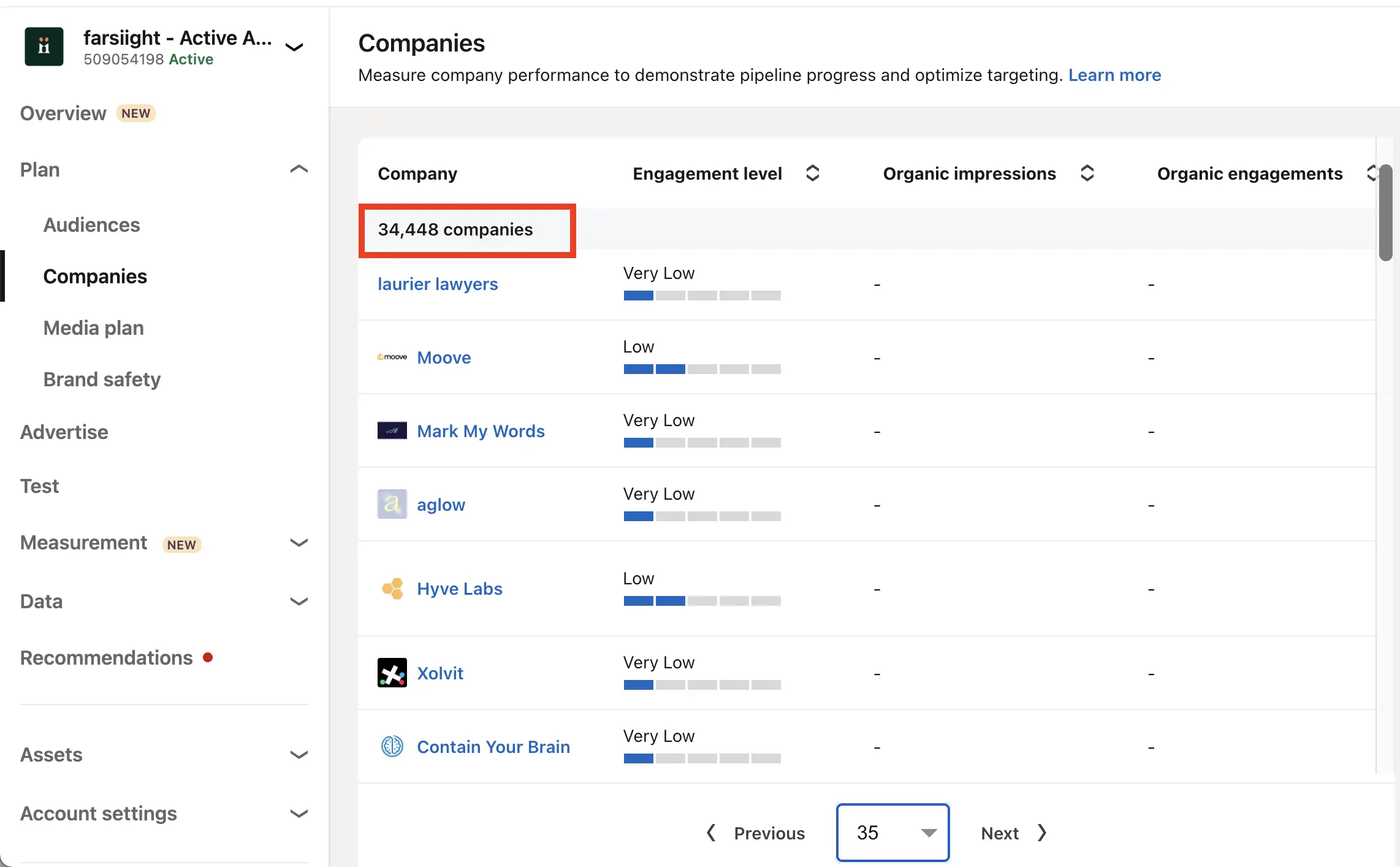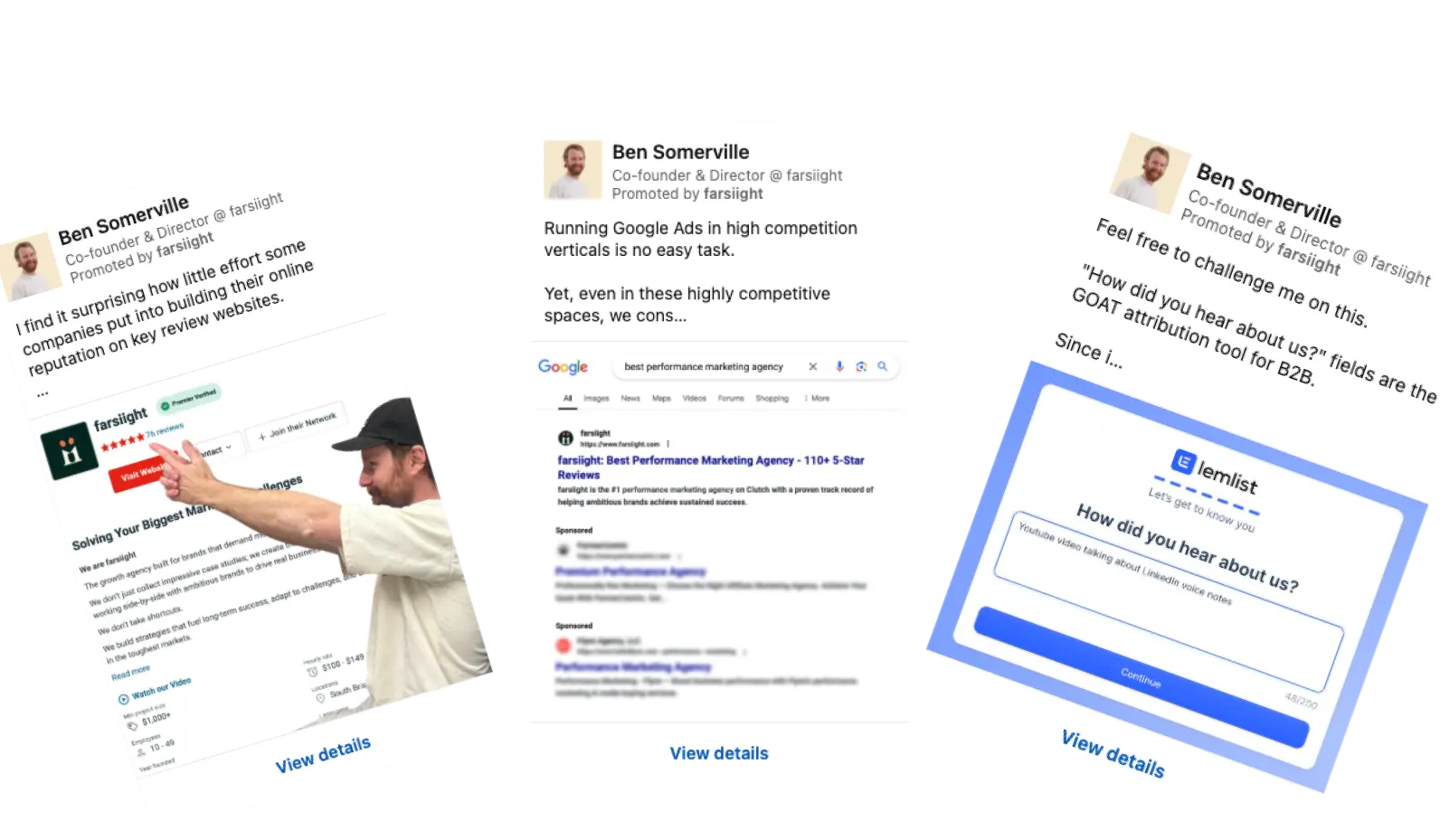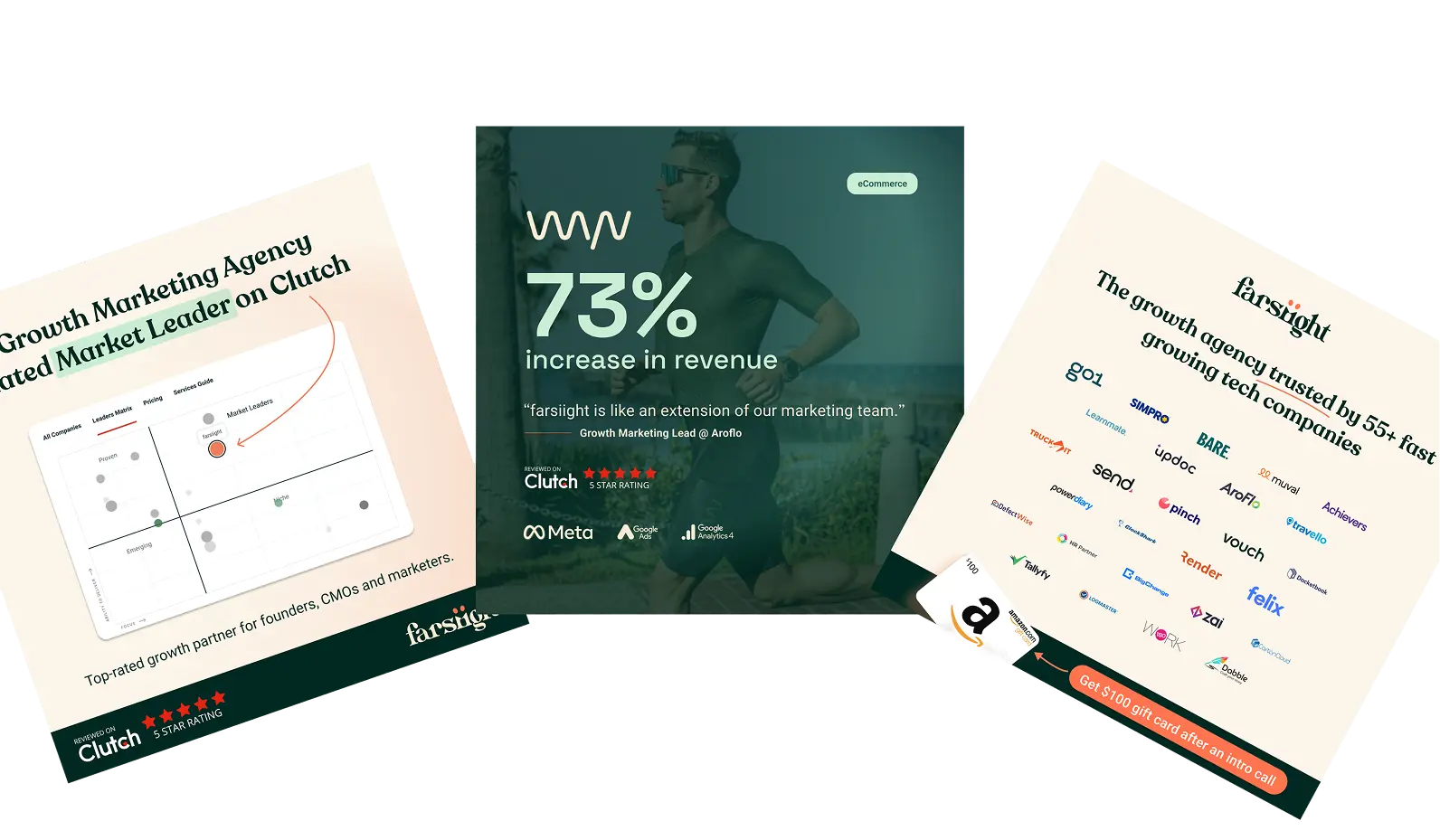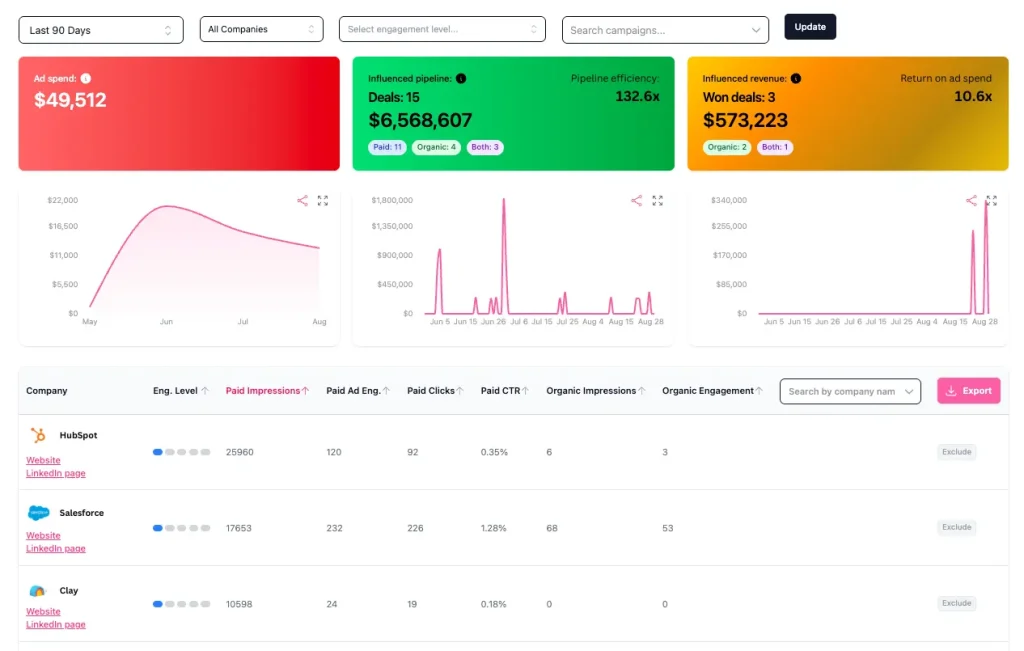
Why B2B Companies Need to Stop Relying on LinkedIn Ads Native Targeting
Most B2B marketers rely too heavily on LinkedIn Ads native targeting, and end up paying for reach, not results. In this article, we break down how farsiight rebuilt its own campaigns from the ground up using first-party data, enrichment tools, and a smarter, human approach to demand generation.
You know that feeling when you’ve built the “perfect” LinkedIn audience, but the results still fall flat?
We’ve been there too.
It’s not that LinkedIn’s targeting doesn’t work; it’s just that you aren’t steering it, it’s steering you.
In the last 12 months, we’ve seen CPMs across B2B accounts rise anywhere from 40–90%, depending on the sector. But rising CPMs aren’t the problem.
The problem is that most brands are paying premium rates to reach people who were never potential customers in the first place.
When you only rely on native targeting, you’ll get what everyone else gets: expensive reach, diluted relevance, and wasted ad spend.
We learnt this first-hand at farsiight.
The Problem With “Perfect” Targeting
When we first started running LinkedIn campaigns for our own brand, we used all the standard filters:
“Marketing Manager,” “Founder,” “E-commerce Director.”
The ads got clicks, but the pipeline didn’t move.
Looking deeper, it was obvious why — we were targeting over 34,000+ companies, and most weren’t even in our ICP.

Company targeting in LinkedIn Ads
The budget was spread thin across irrelevant businesses we’d never work with.
LinkedIn didn’t fail us.
Our targeting strategy did.
So we rebuilt from the ground up.
The shift wasn’t another hack or AI trick. It was a smarter way to approach audience building — one where we owned the data, not LinkedIn.
Introducing our Ground-Up Targeting Method
At farsiight, we rebuilt how we think about audience strategy from scratch.
We call it the Ground-Up Targeting Method, and it’s built on three steps:
- Own your audience list – start with companies that you know fit your ICP.
- Enrich and verify – cleanse, validate, and layer context to make the data meaningful.
- Refine the humans inside – only then, use LinkedIn’s native filters to target real decision-makers.
It’s simple, scalable, and built to ensure every impression you invest in counts.
Step 1 – Start with your own list, not LinkedIn’s
If you want control, you need to own your foundation.
Instead of building audiences inside LinkedIn, export data from your CRM, scrape company domains, or use enrichment tools like Clay and Apollo to identify companies that fit your ICP.
Think of this as creating your own “source of truth” list.
Once you’ve got it, upload that list as a Matched Audience in Campaign Manager. LinkedIn will then map those company domains to active users on the platform, giving you precision without sacrificing scale.
Our First Big Mistake
When we first tried this, we outsourced it.
We paid someone on Upwork to build our company list based on our criteria and uploaded it straight into Campaign Manager. On paper, it looked great. In reality, two out of three domains weren’t even relevant.
That was the turning point.
Step 2 – Enrich before you advertise
We rebuilt everything ourselves using Clay and ChatGPT.
After manually reviewing each company, our list dropped from 7,500 to 2,500. Smaller, sharper, and actually aligned with our ideal client profile.
Yes, CPMs rose as the audience shrank. But every dollar we spent was now going toward the right businesses. B2B, SaaS, and tech companies with 10+ employees across Australia and New Zealand.
Remember, an account list is only as powerful as the context behind it.
We enriched every record with key data points, headcount, sub-industry, and location. Clay handled the structural data, ChatGPT helped flag non-ICP companies, and our team verified everything manually.
We weren’t just targeting “tech companies” anymore.
We were targeting the exact mid-market SaaS, B2B and tech businesses we want to work with, and relatively quickly it started showing in the pipeline.
Step 3 – Target humans, not job titles
Once your company list is solid, this is where LinkedIn’s native targeting finally earns its keep.
Upload your custom audience, then layer in filters for job titles, functions, and seniority to zero in on the right humans inside those accounts.
Instead of letting LinkedIn decide which companies see your ads, you’re now simply guiding it on who within those companies matters most. The decision-makers, influencers, and champions who shape purchasing decisions.
For us, that means layering in roles like Founders, CMOs, Marketing Directors, and senior Demand Gen leads.
We use Sponsored InMail to reach decision-makers directly, while feed ads engage the broader team members who influence up.
It’s the best of both worlds:
-
Your list controls where to show up.
-
LinkedIn’s filters control who to show up to.
Decision-makers drive action. Influencers build consensus. You need both.
Offers that match the mindset
People don’t buy because you targeted them better, that’s just the start of the journey.
They buy because you met them at the right moment with the right message.
At the top of funnel, we rely heavily on founder-led thought leadership. Most of our awareness comes from organic posts shared directly by Ben and me. The tone is informal, curious, and occasionally funny; humour performs surprisingly well when everyone else is taking themselves too seriously.

farsiight TOF ad examples
At the middle of funnel, we focus on social proof. Think client wins, testimonials, logo walls, and bite-sized stories that showcase what partnership with us feels like. These ads build familiarity and credibility.

farsiight MOF ad examples
At the bottom of funnel, we’re about to launch our Free Growth Roadmap offer, delivered via InMail to warm and high-intent accounts. It’s a full walkthrough of what a data-driven growth plan looks like, the same audit process we use to assess potential clients before they sign.
That combination, personality at the top, proof in the middle, and practicality at the bottom, is what turns clicks into conversations.
Patience over panic, play the long game.
One of the biggest mindset shifts for us was understanding how long LinkedIn Ads actually takes to pay back.
Only about 5% of our market is in-market at any given time. That means our sales cycle from first touch to signed client often sits between six and twelve months.
We track the usual metrics in-platform to guide creative decisions, CTR, CPM, CPC, cost per MQL, but our north stars are aCAC and opportunity creation. They’re what tell us whether the system is actually producing growth, not just engagement.
HubSpot houses the core reporting, with visibility dashboards in Fibbler so the team can see weekly trends. We’ve learnt to treat surface metrics as signals, not scores. A rising CPM isn’t always bad if it means we’re reaching the right people more often.

Fibbler dashboard to measure the influenced pipeline
The takeaway
LinkedIn’s native targeting is a fine-tuning mechanism but not the foundation of your audience strategy.
To build demand that compounds, you need to own your audience, enrich your data, speak to humans, and align creative with buying intent.
When we rebuilt our own campaigns this way, the numbers didn’t explode overnight, they matured.
Fewer wasted impressions.
More qualified conversations.
And a pipeline that proves LinkedIn Ads work.

Josh Somerville
Josh is the co-founder of farsiight and has spent the past 12 years scaling PPC campaigns.
Like what you read?
Learn more about digital, creative and platform strategies below.